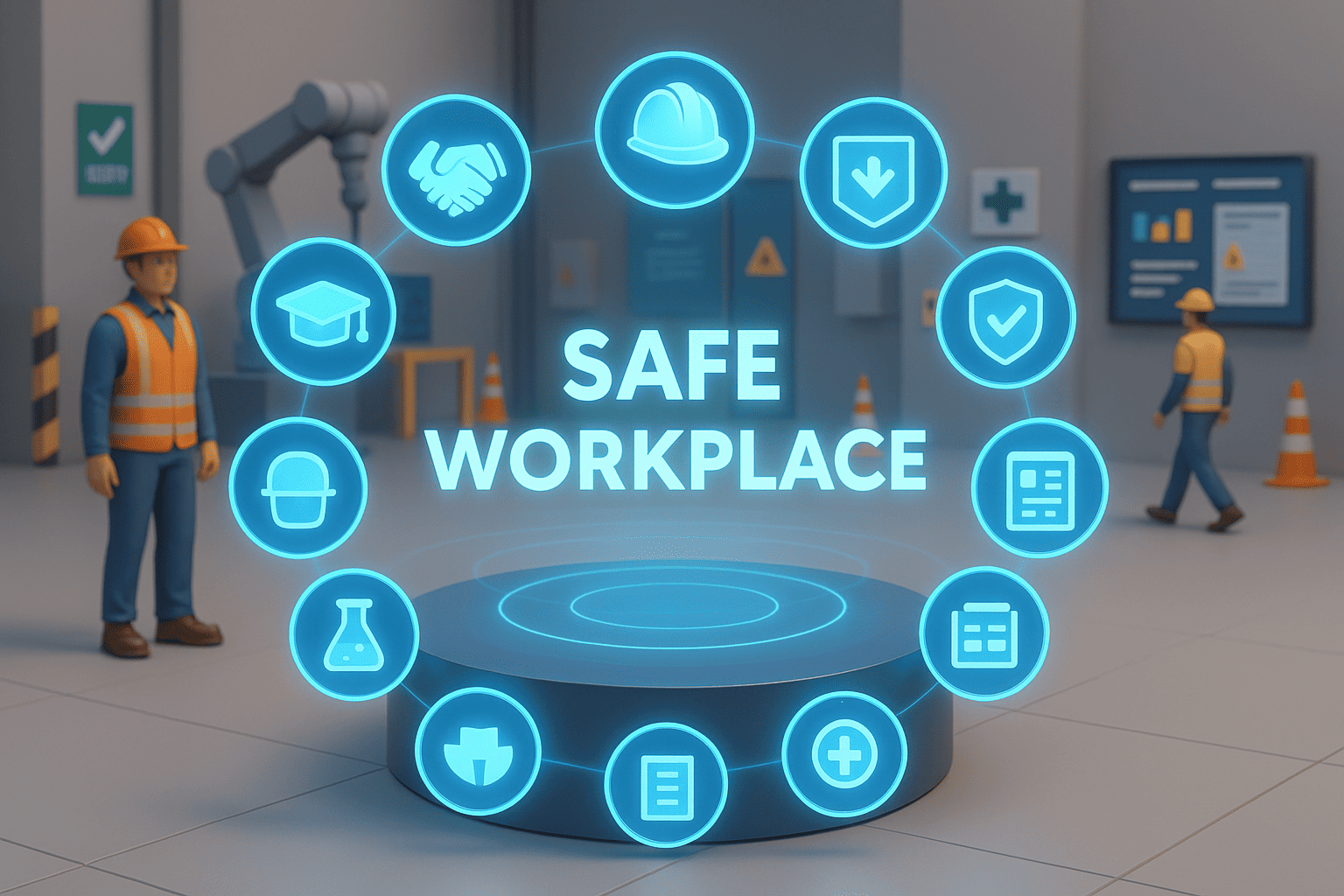Understanding the key elements of a health and safety management system is crucial for any organization committed to workplace safety. There are plenty of standards and pre-qualification systems that can set expectations for your Health and Safety Management System (HSMS).
If you are responsible for safety in your business, you know that these standards are often idealistic and can be difficult to meet.
Let's face it - time and resources are limited, and many of the recommendations and expectations set by these standards and systems offer little practical value in preventing injuries.
Safety management often becomes entrenched in bureaucracy.
That's why We've developed an approach over the past 10+ years to take a business's HSMS from zero to hero.
It's a simple checklist of items to focus on to ensure you have a good and solid foundation for your health and safety program.
Based on our experience, by focusing on these 9 key elements, you can see significant improvements in safety culture, employee behaviors, and injury outcomes within the first 12 months of implementation.
Leadership Commitment
- A group safety charter signed by Directors and General Managers
- Establishing Directors/General Mangers with primary responsibility for close out of incident investigations, and corrective/preventive actions.
- Develop an HSE dashboard to easily identify trends and present data to key leadership for decision-making. Use tools like our LTIFR Calculator and DART Rate Calculator to track key safety metrics.
- Key Leadership to conduct a safety leadership walk every month, to identify hazards, review closeout of corrective actions, and get feedback from staff.
- Middle managers/Supervisors primary responsibility JSA/SWMS, implementing controls, and safety meetings
Competency
- Develop a powerpoint or video induction for staff and visitors, this will save time and provide a consistent approach to induct staff across your business
- Establish personalised training plans for all job roles in your business, these should include external regulatory training, as well as internal SOP training
- Train all operational staff in pre-task planning (i.e. JSA or SWMS)
Hazard Management
- Develop an easily accessible way to report hazards, incidents, and accidents using dedicated health and safety software. Keep this as simple as possible, and ensure it is accessible at all locations and all levels of the business (this will form the backbone of your hazard management, and employee consultation).
- Develop a method to track all hazards, incidents, inspection/audit findings, and close them out - make this a key topic of discussion in safety meetings.
- Give each item a status (Open/Closed)
- Assign responsibility to a single person for each item
- Give each item a due date for closeout.
- Prioritise corrective/preventive actions based on the risk rating of the item.
- Conduct a critical risk assessment identifying organizational critical risks, involving key leadership, and getting feedback from key staff. And establish corrective action plans for each critical risk.
Investigation
- Decide on an incident investigation method and template (e.g. ICAM) and decide at what risk rating an incident requires investigation.
- Ensure that high risk near misses are investigated, and corrective actions implemented as if an accident occurred.
- Corrective/preventive actions identified in investigations should be assigned to individuals, and tracked till implementation/completion.
Awareness Raising
- Safety Alerts campaign – One a month, sharing lessons learned
- Establish Office and site/factory safety notice boards
- Establish shared location for all HSE templates (online recommended, for version control, and consistency across locations).
Auditing
- Establish an inspections schedule, including at-least monthly site/factory HSE inspections
- Establish an HSMS audit schedule, at-least 6-monthly.
- Work towards the requirements of an established standard or prequalification system that is used by your clients (e.g. ISO 45001, Sitewise, IMPAC Prequal, etc.).
Occupational Health
- Get in touch with an occupational health monitoring provider [OHP], and determine your regulatory health monitoring and exposure monitoring requirements using effective OHS software
- Based on OHP advice, implement exposure monitoring and health monitoring to the recommended periods.
Drug and Alcohol
- Contact a drug and alcohol testing company with help in developing a legally-sound drug and alcohol policy, and testing regime
Fatigue Management
- Determine your company’s fatigue risk by getting employee feedback, and analysing employee work hours, and break hours. Compare this to NZTA requirements.
